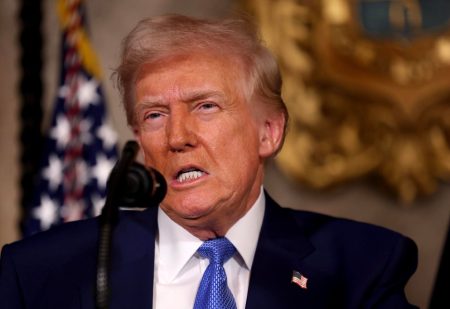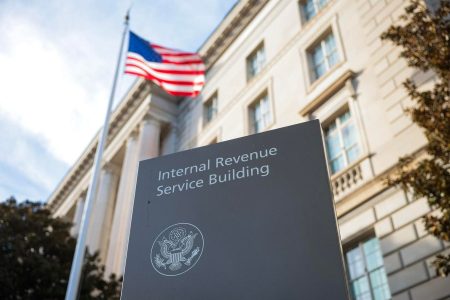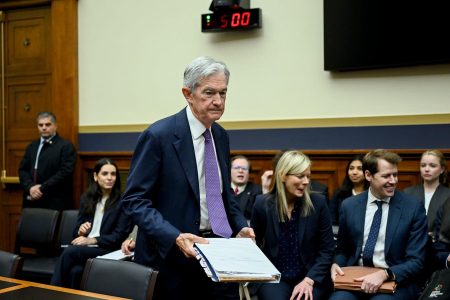The U.S. Treasury bond market is currently experiencing a severe downturn, a scenario reminiscent of the volatile periods of the early 1980s. Yields have spiked significantly, even as the Federal Reserve has begun cutting interest rates, a counterintuitive market reaction that signals a potential paradigm shift. This unusual dynamic, last seen during Paul Volcker’s fight against inflation in 1981, suggests the market is reassessing the perceived risk-free status of U.S. Treasuries. The underlying cause of this turmoil lies in the precarious state of U.S. fiscal health, characterized by a ballooning national debt, a substantial budget deficit, and rapidly approaching debt maturities. The confluence of these factors, coupled with the Fed’s ongoing efforts to reduce its balance sheet by selling Treasuries, is creating immense pressure on bond prices.
The escalating national debt, exceeding $2 trillion annually and representing a significant percentage of GDP, poses a formidable challenge. The impending maturity of approximately $8 trillion in debt further exacerbates the situation, placing an enormous strain on government finances. Simultaneously, the Federal Reserve’s shedding of its Treasury holdings, amounting to hundreds of billions of dollars, adds to the supply glut in the market, further depressing bond prices. Additionally, the substantial interest payments required to service this massive debt, totaling over $1 trillion, represent a significant drain on federal resources. These combined pressures paint a grim picture of fiscal sustainability, contributing to the market’s unease and the subsequent rise in bond yields.
Inflation, while seemingly under control with a CPI hovering around 2.5%, presents another layer of complexity. The persistence of core services inflation, remaining stubbornly high at 4.25%, suggests underlying inflationary pressures remain strong. This divergence between headline inflation and core services inflation creates uncertainty and fuels market anxieties, as investors remain wary of a potential resurgence in inflationary pressures. The bond market, acutely sensitive to inflation risks, is reacting accordingly, with yields rising to reflect these concerns. The combination of fiscal instability and persistent inflationary pressures creates a volatile environment for bonds, contributing to the current market downturn.
The traditional reliance on foreign buyers to absorb U.S. debt is also facing significant headwinds. Strained international relations, marked by trade disputes and tariffs, have dampened foreign appetite for U.S. Treasuries. This dwindling demand from international investors further exacerbates the supply-demand imbalance in the bond market, placing additional upward pressure on yields. Consequently, the government is increasingly reliant on domestic borrowing, which risks crowding out private investment and potentially leading to higher interest rates across the economy. This shift away from foreign funding sources towards domestic borrowing creates additional vulnerabilities and uncertainties in the U.S. financial system.
The past few years have been particularly challenging for bond investors, marking one of the worst periods in market history. The aggressive interest rate hikes implemented to combat inflation, followed by the current uncertain environment surrounding rate cuts, have created a turbulent market characterized by low risk-adjusted returns. This period of volatility has eroded investor confidence and contributed to the current market downturn. The current trajectory suggests a potential paradigm shift, with U.S. Treasuries potentially losing their long-held status as a risk-free asset. This re-evaluation of risk is forcing investors to reconsider their portfolio strategies, acknowledging the increasing two-way nature of bond market risk.
The political landscape further complicates the situation, adding fuel to the fire. Conflicting fiscal policies, with some advocating for simultaneous spending increases and revenue cuts, exacerbate concerns about fiscal responsibility and long-term sustainability. Recent political maneuvering around the debt ceiling has only intensified market anxieties, highlighting the potential for political instability to further destabilize the bond market. The interplay of these political and economic factors paints a concerning picture for the future of U.S. government bonds.
The current market behavior, characterized by falling bond prices despite falling interest rates, is a significant anomaly. This unusual dynamic, last observed in the early 1980s, suggests a fundamental shift in market perception of U.S. Treasury risk. The confluence of a ballooning national debt, substantial upcoming debt maturities, and persistent inflation concerns has eroded investor confidence. The traditional safe-haven status of U.S. Treasuries is being reevaluated, forcing investors to grapple with increased uncertainty and potentially lower returns. This cautious outlook, reflected in the current market downturn, suggests that the bond market’s tumultuous journey is far from over.










